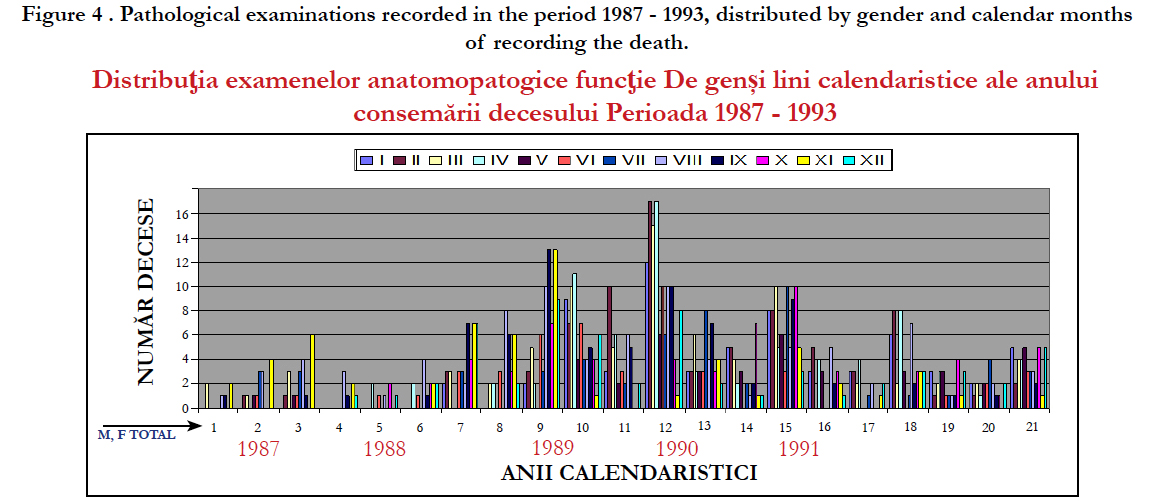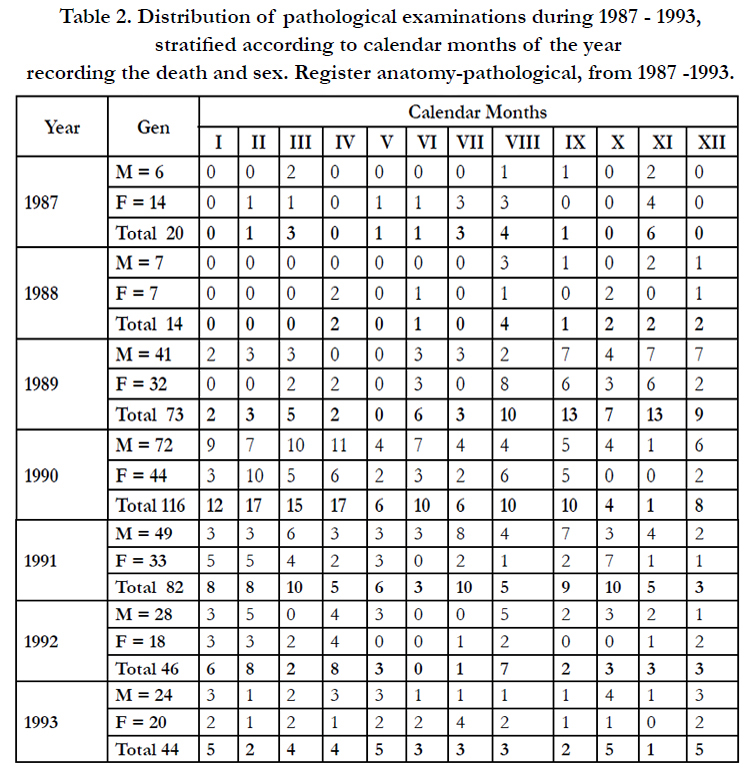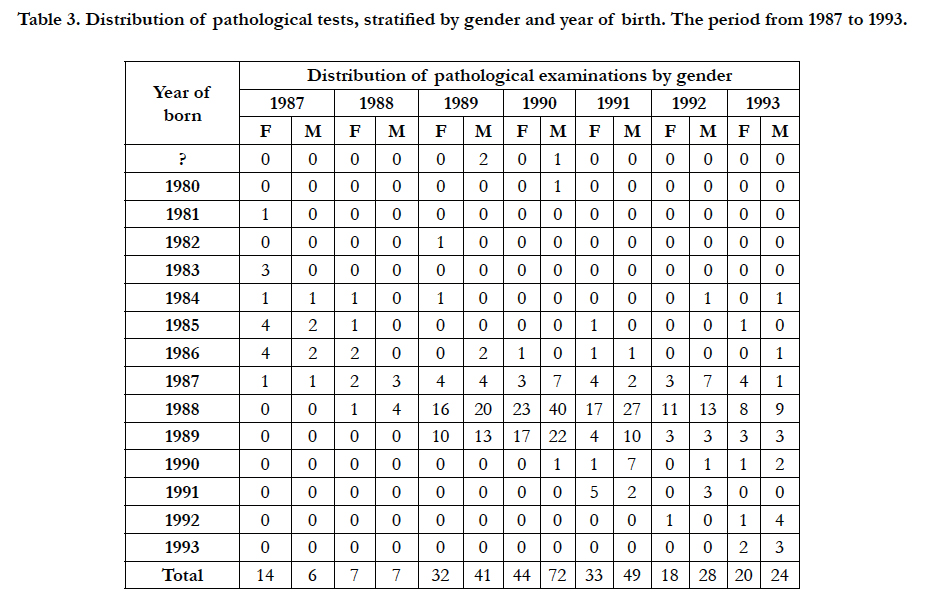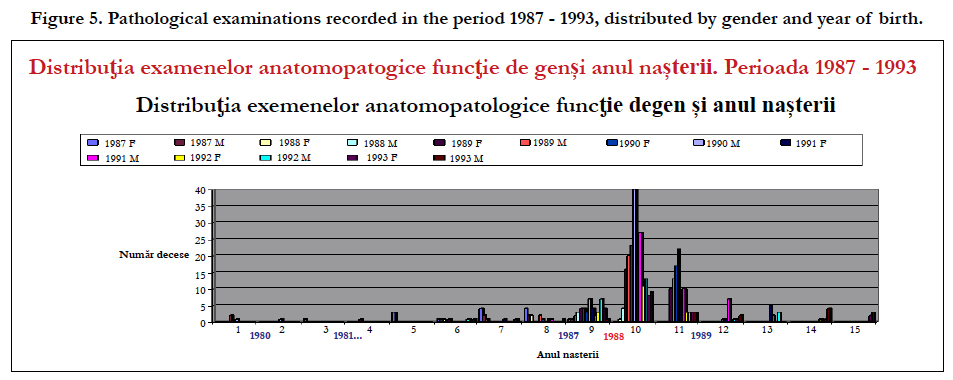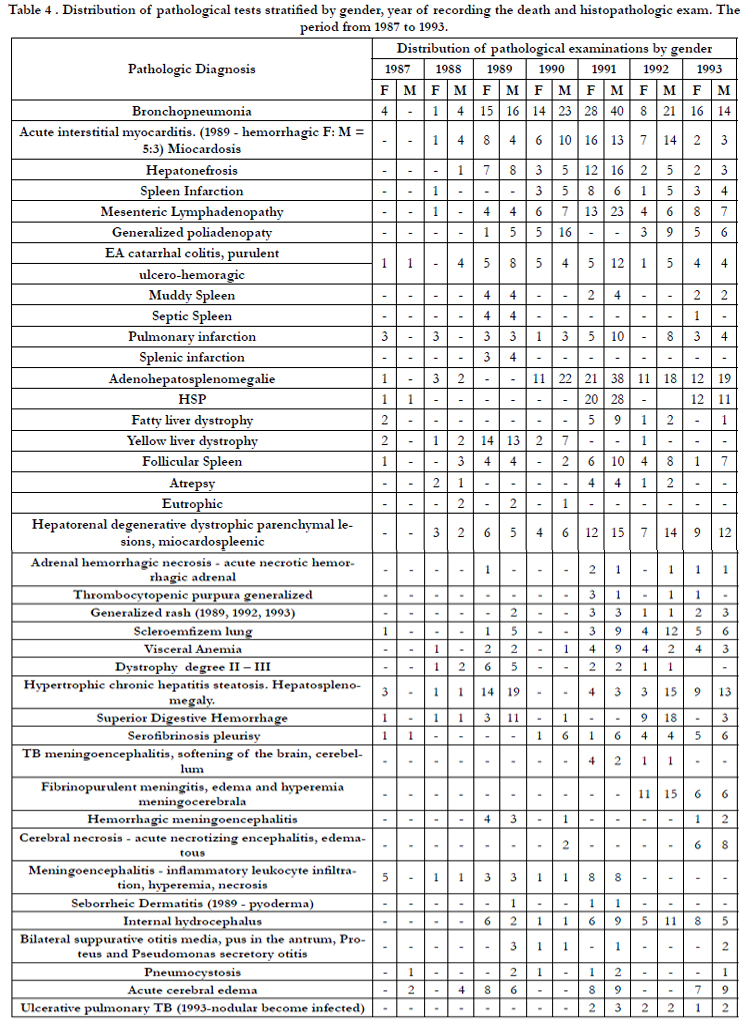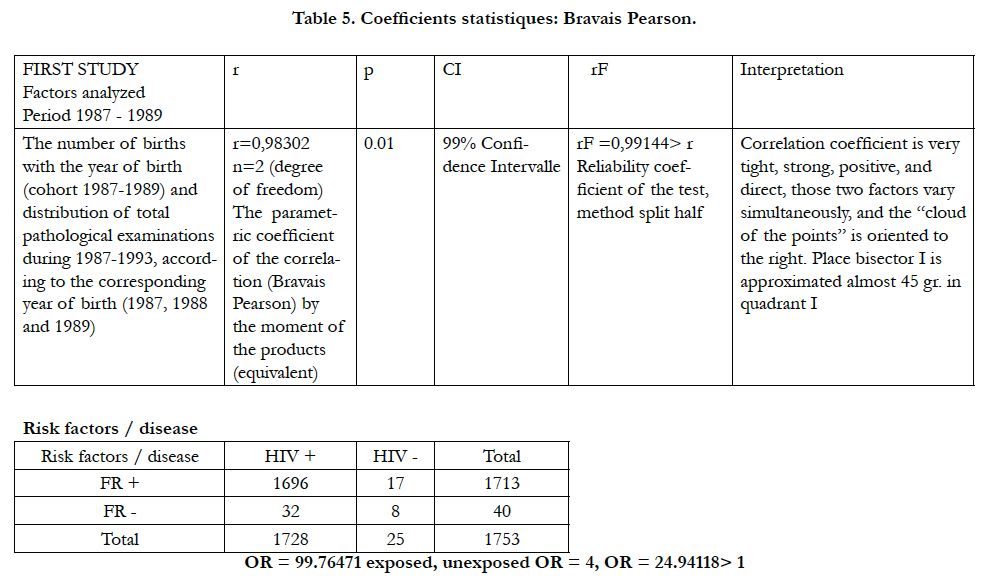Epidemiological Considerations On Hiv In Constanţa County Contribution to the epidemiological characterization of the retrospective cohort (1987 – 1993) from Constanta
Iulia Gabriela Şerban
Consultant epidemiologist, psychologist, HIV-AIDS Regional Center, Constanta, Romania.
*Corresponding Author
Iulia Gabriela Şerban,
Consultant epidemiologist,
psychologist, HIV-AIDS Regional Center,
Constanta, Romania.
E-Mail: serbaniuliagabriela@gmail.com
Received: January 29, 2015; Accepted: February 24, 2015; Published: February 26, 2015
Citation: Iulia Gabriela Şerban (2015) Epidemiological Considerations On Hiv In Constanţa County Contribution to the epidemiological characterization of the retrospective cohort (1987 – 1993) from Constanta. Int J AIDS Res. 02(1), 11-18. doi: dx.doi.org/10.19070/2379-1586-150003
Copyright: Iulia Gabriela Şerban© 2015. This is an open-access article distributed under the terms of the Creative Commons Attribution License, which permits unrestricted use, distribution and reproduction in any medium, provided the original author and source are credited.
Abstract
The chosen theme is relevant to show the progress in addressing public health services currently in Romania, especially with the care of the patient HIV- AIDS in the HIV- AIDS Regional Centre from Constanta.
We proposed ourself to organize the existing case law in a database, which represents a prerequisite for further steps to elucidate the epidemiological process.
We reviewed the factors that favored the dissemination of infection, unable to specify who the sources were.
The main objective of this paper is to formulate epidemiological considerations of HIV - AIDS in Constanta County, by describing the epidemiological characteristics of HIV - AIDS from Constanta county, retrospective HIV- AIDS epidemiological model locally.
The originality of the study: a descriptive presentation from the registers and studied observation sheets was transformed into a database, which was presented in the study.
Constanta has come to represent a model for surveillance and monitoring of HIV nationally and internationally, many of the models of care, programs, were expanding to other counties and countries.
The chosen theme is important, addresses theoretical and methodological issues in HIV AIDS areas of disaster risk science: emergency response technology and risk management; local risk governance policies and regulations.
2.Introduction
2.1 Motivation
3.Objective
3.1 Main Objective
3.2 Secondary Objectives
4.Materials and Methods
5.Results
6.Discussion
7.Conclusion
7.1 Initial characteristics in Constanta
7.2 Subsequent peculiarities in Constanta County
7.3 The limits of the study
7.4 Contributions
7.5 Originality
8.References
Keywords
HIV-AIDS; Epidemiological Considerations, Anatomy – Pathological Exam, Hiv-Aids Regional Center Constanta.
Introduction
The global AIDS epidemic is one of the greatest challenges facing our generation. AIDS is a new type of global emergency-an unprecedented threat to human development requiring sustained action and commitment over the long time. [2004 Report on the global AIDS epidemic, Preface, Kofi A. Annan,
data.unaids.org/Global-Reports/Bangkok-2004/Unaidsbangkokpress/gar2004 html/GAR2004_01_en.htm#TopOfPage]
In many parts of the world, HIV/AIDS is still seen as a death sentence, a disease from which there is no recovery. But with the ever improving availability of antiretroviral therapy, HIV is increasingly recognized as a chronic rather than terminal illness. This transition requires special adjustments especially in the pediatric and adolescent populations. [HIV Curriculum for the Health Professional, Kristin L. Close, Andrea K. Rigamonti, Psychosocial Aspects of HIV/AIDS: Children & Adolescents, p.296,
www.aidsdatahub.org/dmdocuments/Psychosocial_Aspects_of_HIVAIDS_Children_&_Adolescents.pdf].
The epidemiological trend of evolution of HIV-AIDS is a topic of great interest to the scientific community today.
The discovery impact of HIV cases in 1990, with an explosive increase in the number of HIV confirmed cases, without being able to deepen the epidemiologically phenomenon and the lack of accurate explanations on the emergence, development and subsequent evolution of the epidemiological phenomenon caused were determinants on the choosing of the theme.
We proposed to organize the existing case registrations in a database that represents a prerequisite for further steps to elucidate the epidemiological process.
We monitored the factors that favored the dissemination of infection, unable to specify who the sources were.
The chosen theme is relevant to show the progress in addressing public health services currently in Romania, especially with the care of the patient HIV- AIDS in the HIV- AIDS Regional Centre from Constanta.
Lack of available epidemiological studies and circulation of unverified and unsubstantiated scientific information contributed to the uncertainty regarding the onset, causes and HIV AIDS epidemiological development in Romania.
We made an analysis of the course of HIV infection in Constanta for the period 1987-2013. The patients were investigated through epidemiological surveys, clinical examinations, and laboratory and immunological. For statistical analysis we used Microsoft Excel.
This paper aims to formulate bioethical and epidemiological considerations on the evolution of HIV infection based on a retrospective and prospective epidemiological analysis of determined groups of patients from Constanţa.
The cohort of children born in the period 1987-1989, which was individualized in Constanta, can be characterized retrospectively from epidemiologically and clinically, in a period (1987-1993 ). Since in the period under review there were no specific therapeutic means (antiretroviral therapy ), results will highlight the natural history of HIV - AIDS in the study area ( Dobrogea ).
Epidemiological considerations on HIV infection in Constanţa County, during 1987-1993.
- Description of the epidemiology of HIV-AIDS from Constanta County during 1987-1993.
- The local retrospective epidemiological model (1987-1993).
Materials and Methods
Processing the existing database, records of the consultations, surveys on assessing health status, pathological, laboratory data, clinical observation on multicriterial sheets, the register of deaths and pathological examinations.
In Constanta we have the cohort of children born in the period 1987-1989, as part of the national cohort, the largest in Europe at the moment of 1990.
In this study we have a complex epidemiological investigation of cohort during 1987-1993, an opportunity to study the natural historyof a disease, by characterizing the newly identified population at risk of acquiring the disease, from the first moment to the moment of first initiation on therapeutic means.
A database, recorded during 1987-1993, was analyzed. Were first studied 1728 HIV- AIDS cases detected in Constanţa.
The vast majority of the population in cohort comes from public care and pediatric wards, dystrophic, premature, infant surgery of Constanta County Hospital.
Organization and data collection was performed, through analysis in terms of ordering data, correlation, and validation: descriptive analysis of the elements which determine the distribution of cases. We have identified characteristics from [1]:
- Time - tendency , variation , the distribution of the disease by the time variable ( changing age structure over time)
- Place - geographic (latitude, longitude - Black Sea port, airport, tourist city, ways of introducing in the country: people on the move, traveling. We made the evaluation of HIV - AIDS on geographical level emphasizing geographical distribution, population at risk, prioritizing risk factors, for geographical comparisons we used cartograms), geological, industrial ( petrochemical-Midia Năvodari), agriculture (IAS, CAP), climatic, geopolitical conditions, prior to 1989, blood products, pollution status, place of work (childcare institutions, sex workers, accidental exposure)
- are evaluated the determinants of public health problems, are shown to define the characteristics of the affected population, the risk population - variable 'person' (belonging to a group of high - risk, the health providers, travelers, isolated populations, who might - by changing life behavior - to be at risk of infection. Aspects of demography - biological epidemiological indicators like gender / sex [ M, F ], age [age group, adult - children], ethnicity, race, area of origin [U , R], village of origin, place of residence, behaviors [donor blood, MSM, heterosexual, IDU, sex workers], profession, occupation, life style, socio-economic level, and other information - migration, tourism) [1].
We proposed to observe, to describe cumulative, the explanation of the phenomenon, to monitor, to control (preventive measures, and curative - ARV) and to formulate the considerations based epidemiological verified. We conducted descriptive analysis for categorical data (frequency, percentage) and quantitative (average - homogeneous nature of the cohort, i.e.: median, range, standard deviation, heterogeneous character of the lot). Collection of raw data was ordered and grouped in tables and charts, on chronological criterion. I used tables for their economic character, the most simple and effective explanation of the evidence, because we wanted to present a large number of data. Herds were expressed in distributions, frequency distributions
We established one group of patients:
- Registered in the period 1987-1993, which is mainly cohort of children infected through nosocomial transmission - included in retrospective study.
Results
Figure 4 . Pathological examinations recorded in the period 1987 - 1993, distributed by gender and calendar months of recording the death.
Table 2. Distribution of pathological examinations during 1987 - 1993, stratified according to calendar months of the year recording the death and sex. Register anatomy-pathological, from 1987 -1993.
Table 3. Distribution of pathological tests, stratified by gender and year of birth. The period from 1987 to 1993.
Figure 5. Pathological examinations recorded in the period 1987 - 1993, distributed by gender and calendar months of recording the death.
The lack of results from previous biopsies performed does not allow correlation with pathological data. And biopsies were subject to the same factors of variability - interobserver variation, invasive methods, percentage of complications, increased overall cost.
Main diagnoses in children deceased are bronchopneumonia, adeno-hepato-spleno-megalic syndrome, weakness stature (HSP), HIV-AIDS confirmed infection, atrepsie (1990), hypo chromic anemia, dystrophy, pulmonary TB.
Discussion
1987-1989 cohort frequent pathology was: herpes zoster (N = 477, 27.604%) debuted in young children, before making chickenpox, cirrhosis in children, HAV without AgHBs, HAV B and delta, HAV transfusion NANB , severe pneumococcal infection, on the fund atrepsie (N = 74, 4.282%), dystrophy (N = 174, 10.069%), MPC (N = 24, 1.389%), severe weakness syndrome (N = 148, 8565 %). Registered number of AgHBs carriers (N = 95, 5.498%) is high in young people from 1987 to 1989 cohort, had the same route of transmission,were infected once. The germs involved in infections: Staphylococcus, Streptococcus, Salmonella, Shigella Flexner, Sonnei, meningococcus, pneumococcus, piocianicul, Proteus, Klebsiella, E. coli, mycobacteria.
The severe evolution has led to:
Table 4 . Distribution of pathological tests stratified by gender, year of recording the death and histopathologic exam. The period from 1987 to 1993.
Conclusion
- During 1987 to 1990 there was an uninformed population on HIV- AIDS phenomenon, which later will become familiar with the existence of infection, transmission patterns and healthcare opportunities (after 1990).
- Since at that time exist not etiological treatment, all patients in the studied group received comprehensive medical care, including improved care, which have been applied in both hospital and ambulatory, until death. The clinical course of this group represents a segment of the natural history of HIV - AIDS in Constanta County.
- The route of transmission was: transfusion, injections (parenteral, 84.549 %). The treatments were performed in pediatric wards ( transfusions Pediatrics I - N = 78, 4.514 % and Pediatrics II - N = 337, 19.502, accumulating a total of N = 415, 24.016 % ), and the parenteral treatments in other sections (dystrophic, premature baby, swings).
- The discharge diagnoses for children were: atrepsy (N = 74, 4.282 %), dystrophy (N = 174, 10.069 %), MPC (N = 24, 1.389 %), severe weakness syndrome (N = 148, 8565 %). Co- infections HIV-HVB/HVC is explained by simultaneous transmission (same route of transmission).
- Orphan patients came from wards dystrophic and premature, mostly being institutionalized or abandoned children.
- The epidemic was characterized as follows: rural type ( N = 635, 36.748 %) , which , together with the percentage of the institutionalized children ( 14.12 %) , forming about 51 % ( 50.868 % ), the rest being found in urban ( 49.132 %). After 1989, rural- urban social mobility is an explanation of urbanization trend, which persists in 1990, 1991 and 1992, with a better detection of infection in city.
- In the studied cohort, pediatric population prevails, within it a number of N = 21, 1,215 %, from multiple pregnancies (twins, trigemelare).
- The determinant virus is “wild”, new in circulation, with no immunity in the population.
- There was an epidemic, due to the number of cases diagnosed within a very short time.
- The evolution of the epidemic had imposed unprecedented organizational measures of health services, to ensure optimal support of a large number of cases (creation of additional space for pediatric population near Constanta Municipal Hospital, where they were brought all HIV-positive children from orphanage, to ensure their uniform assistance).
- The diagnosis of the cases in this period was mainly clinical and initially reduced only to HIV testing by ELISA, then gradually was expanded the scope of biological investigation, trying to standardize them.
- Was an initial high mortality, which best defines the “pattern “of development of infection in the study group (rapid and profound impairment of the immune system with rapid deterioration and death).
- HIV can be a model for monitoring other chronic infections (oncology, hematology, hepatology).
between 1988-1990 was AIDS diagnosed a group of children with severe malnutrition and weight loss syndrome, the existence of the group of children with encephalopathy, with difficult etiologic diagnosis: fetal distress at birth, HIV, other infections, evolving extremely particular, in the absence of specific antiviral therapy.
HIV infection has spread with great intensity in Constanta. Constanta important epidemiological outbreak involved children with birth year in a period of three years (1987-1989), representing the cohort from 1987 to 1989 in Constanta County. There was a high initial mortality. Epidemiological data have shown that infection developed is "African type", rapid extension units’ children under congestion, limit supply to sanitary materials and medical maneuvers deficient. We note the presence of several adults in lot.
The study was made only retrospectively, describing the evolution of disease under existing data in the database. The HIV database was created through a lengthy process and during the period studied there is lack of information, so that affected the complexity of analysis, it not obtained data extremely accurate, enabling very valid epidemiological considerations.
The study have their limitations, they could deepen epidemiological investigations in the light of modern molecular diagnostics, allowing generation of parentage cases, but have their own importance to this point in the investigation, paving the way for future research, that will elucidate correctly the epidemiological natural history of HIV infection in our country and will give the expected response of thousands of parents of deceased children.
The limitations of the study are in the fact that can not yet elucidate the overwhelming presence of the F subtype in Romania in general, "an island in a sea of B subtype”, and specially in Constanta, that shows a possible infection through " single source "which contradicts the route of transmission by transfusion, which was presented by the existing epidemiological surveys, approved at this time. The epidemiogen potential of F1 strain is important , given the large number of cases and the epidemic character .The import infection remains undervalued, as demonstrated phylogenetic relationship between strains HIV1 subtype F1, isolated in Angola and Romania, presented by Paraschiv S, Oţelea D. - "HIV - 1subtypes and resistance in Romania" on 2 - 4 September 2010 at the International School" HIV Medicine 2010' edition - II, Constanta, Hotel Ibis, organized by Baylor College of Medicine, Texas Children's Hospital, University Ovidius University Carol Davila Bucharest, citing the study" Close phylogenetic relationship between Angolan and Romanian HIV-1 subtype F1 isolates", authors: Monick L Guimaraes, Ana Carolina P Vicente, Koko Otsuki, Rosa Ferreira, FC da Silva, Moises Francisco, Filomena Gomes da Silva, Ducelina Serrano, Mariza G Morgado, Gonzalo Bello.
Subsequent epidemiological studies may explain this particular distribution, demonstrating the need to develop in-depth epidemiological studies.
the originality of this study is to update the data base from early period, with extremely valuable data, entirely untapped in terms of epidemiological analysis of the phenomenon. This paper brings original features that allow completion of some major research areas, important for understanding the epidemiological characteristics of HIV in Constanta.
The originality of the study: a descriptive presentation from the registers and studied observation sheets were transformed into a database, which was presented in the study. The originality of this study is to update the incipient data base with extremely valuable data, unused entirely from the perspective of the epidemiological phenomenon.
These results generate special concern in future epidemiological studies in depth to give the actual size of the phenomenon of HIV - AIDS in Constanta, and in Romania.
The chosen theme is important, addresses theoretical and methodological issues in HIV AIDS areas of disaster risk science: emergency response technology and risk management; local risk governance policies and regulations.
References
- Azoicăi D, Rafila A, Piţigoi D, Galan A (2012) FORMAREA profesionālā în Domeniul EPIDEMIOLOGIEI Si PROMOVAREA UTILIZÃRII NOILOR TEHNOLOGII PENTRU PERSONALUL DIN Sectorul SÃNÃTÃŢII, POSDRU / 81 / 3,2 / S / 59337, manual de curs pentru medicii epidemiologi.Constança .71-75. www.epidemionet.ro
- Popovici F, Zolotusca L, Apetrei RC, Beldescu N, Hersh B, et al. (1991) The Epidemiology of AIDS in Romania. Seventh International Conference on AIDS, Florence, Italy.16 – 2.
- Zolotusca L, Beldescu N, Popovici F (1992) Changes in pediatric AIDS Risk Factors due to the implementation of a short term plan of actions in Romania. VIII International Conference on AIDS, III STD World Congress, Amsterdam, The Netherlands.2: 19 – 24. Abstract PoC4290.
- Mătuşa R, Ilie M (1992) Clinical Description of 650 children with AIDS in Constanţa, România. Management of pediatric HIV (Oral Abstract), VII International Conference on AIDS, III STD World Congress, Amsterdam, The Netherlands. 1: 19 – 24. Abstract TuB0515.
- Mătuşa R, Ilie M, Cernescu C (1994) Neurological manifestations of HIV infection AIDS in children. Tenth International Conference on AIDS, International Conference on STD, Yokohama, Japan.1:7–12. Abstract PB0467.
- Apetrei C, Mitroi I, Buzdugan I, Iancu I, Strat L, et al. (1994) Epidemiological model of recent introduction of HIV in a virgin population. HIV infection of children in North East Romania. Tenth International Conference on AIDS, International Conference on STD, Yokohama, Japan.1:7–12. Abstract PC0017.

